Awesome work!!!


It's like feeding a kid candy, can I have more PLEASE...

FYI,
The only way to really know what heat you have is to measure it. I found that the PSU calculators are a bit overly conservative. My Q6600 for example should be cranking out over 200 watts at the overclock and Vcore I'm running, but I measure quite a bit less.
I'm not a big thermo guy, it was my only class in college I dropped out of..

But after digging around the net and playing around with some numbers I found what I need to calculate heat dump. You can fairly accurately measure this if you can log temperatures of a known volume of water over a period of time.
This is how you can do it, and how I did it just for fun to see if I could.
-Find a larger thermos or other container you can plumb some barbs into.
-Now create a loop for one component (or more if you want) without any sort of radiator.
-Now fill this loop with cold or cool water because you need some time to measure the water rise and it's only getting warmer and warmer without a heat exchanger.
This is what mine looked like:
This is the only way I know of that gets to the bottom of heat and takes into account all the heat losses through the MB, etc.
It would be interesting if several people would do this so we could get some sort of database put together. It's obviously outside the scope of one person testing considering the cost of processors and setups.
Anyhow, per the calculators my Q6600 should be consuming 200 watts, but I measure about 120. Maybe I screwed up the math somewhere, but it seems to make sense and at least in the ballpark. I guess I always assumed heat dump may be something like 80-85% of the power consumption, but it's alot more complex when processor efficiency is also influenced by how cool it's running..

Carry on with the goodness










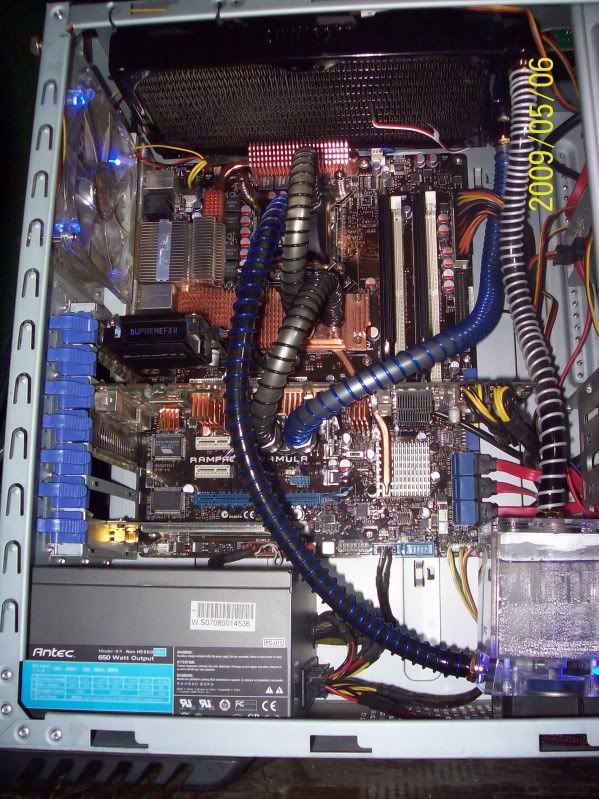
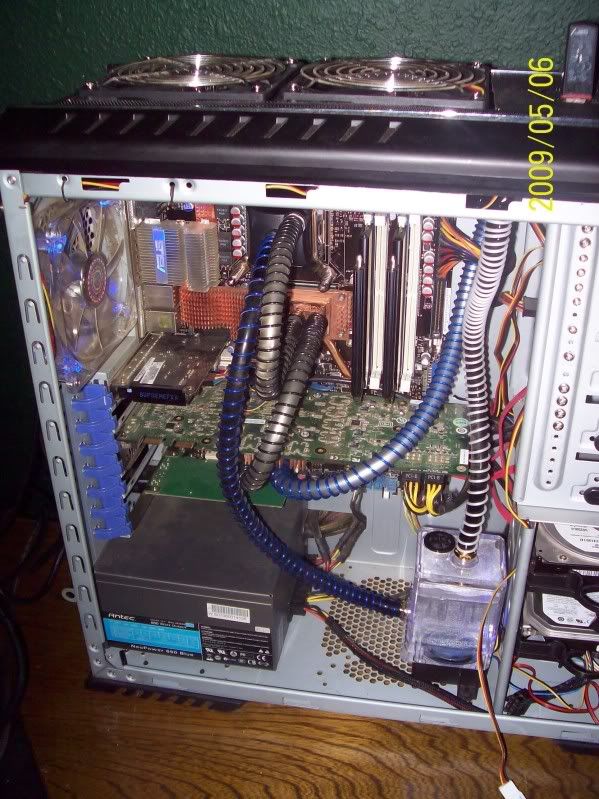


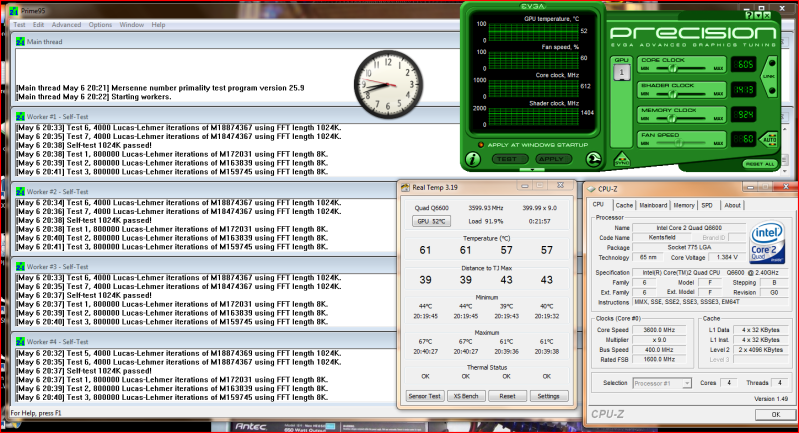



 Reply With Quote
Reply With Quote






















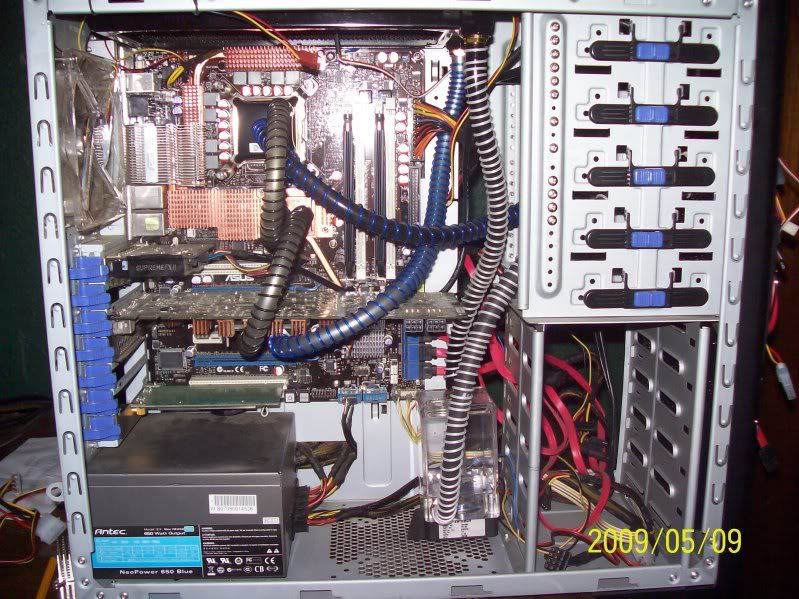

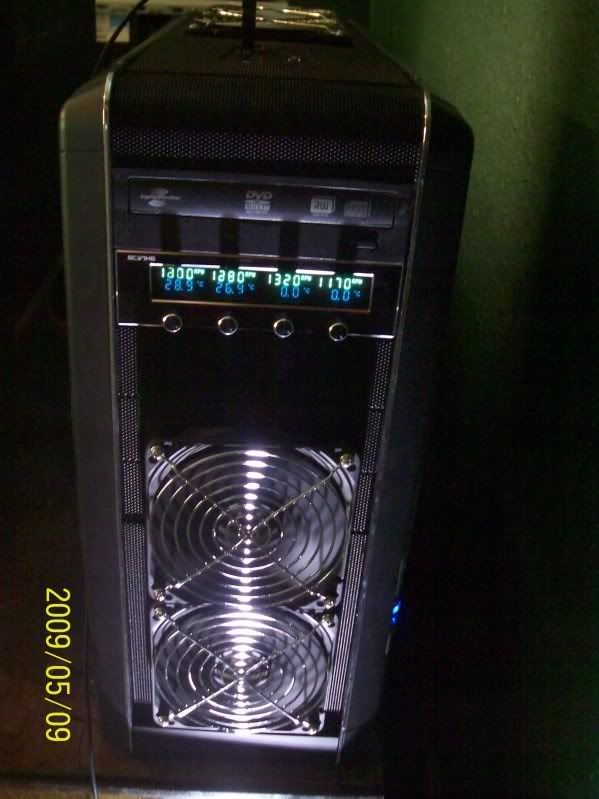
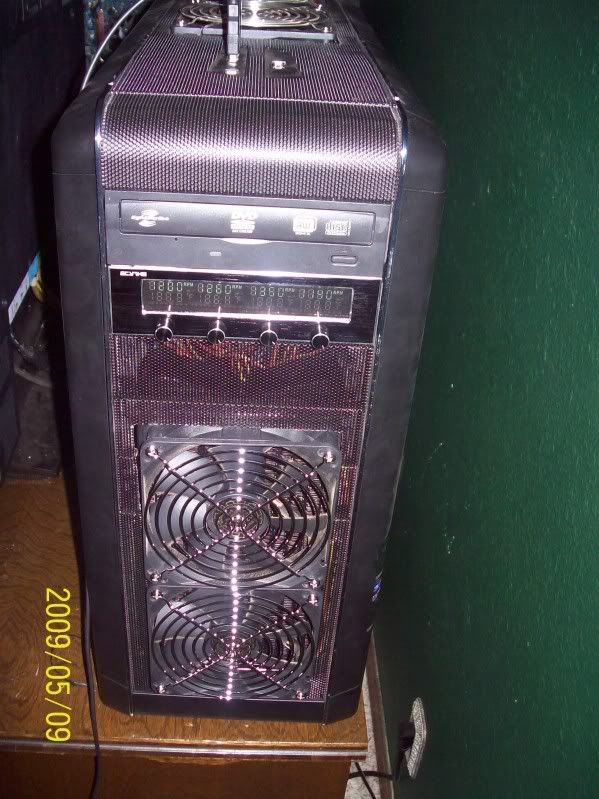





Bookmarks